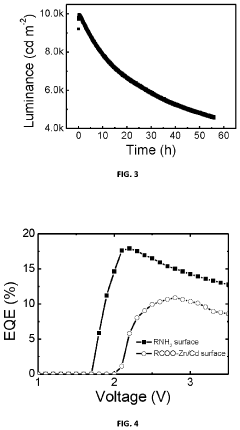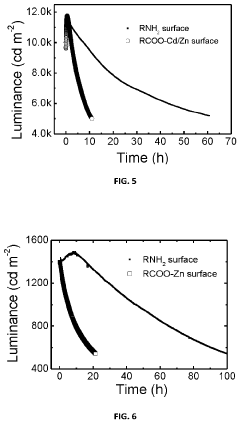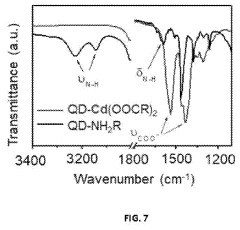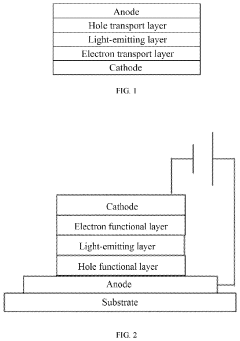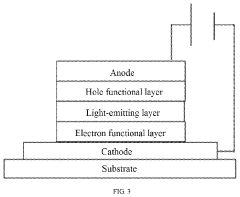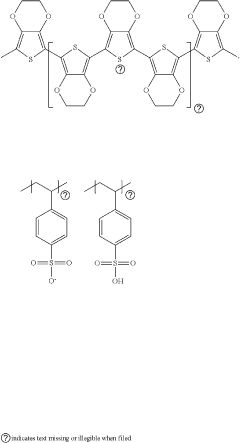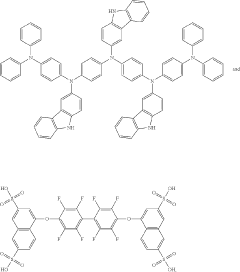How to Integrate Seamlessly with QLED in Tech Ecosystems?
QLED Integration Goals
The integration of QLED (Quantum Dot Light-Emitting Diode) technology into modern tech ecosystems represents a significant leap forward in display technology. The primary goal of this integration is to enhance the overall visual experience across a wide range of devices and applications. QLED technology offers superior color accuracy, brightness, and energy efficiency compared to traditional LED displays, making it an attractive option for various industries.
One of the key objectives is to seamlessly incorporate QLED displays into smart home systems. This integration aims to create more immersive and responsive environments, where QLED screens can dynamically adjust their output based on ambient lighting conditions and user preferences. The goal is to develop QLED-enabled smart mirrors, windows, and other household surfaces that can display information and entertainment content while maintaining their primary functions.
In the realm of mobile devices, the integration of QLED technology seeks to push the boundaries of display quality and energy efficiency. The aim is to develop ultra-thin, flexible QLED screens that can be incorporated into smartphones, tablets, and wearable devices without compromising battery life or device form factor. This integration also focuses on improving outdoor visibility and reducing eye strain during prolonged use.
For the automotive industry, QLED integration goals include the development of advanced heads-up displays (HUDs) and in-vehicle infotainment systems. These displays should offer enhanced visibility in various lighting conditions, provide crisp and vibrant graphics for navigation and entertainment, and seamlessly blend with the vehicle's interior design. The ultimate aim is to improve driver safety and passenger experience through superior visual information delivery.
In the field of augmented and virtual reality, QLED integration aims to overcome current limitations in display technology. The goal is to create high-resolution, low-latency QLED microdisplays that can deliver more realistic and immersive experiences. This integration focuses on reducing motion sickness, improving color accuracy, and enhancing overall visual fidelity in AR/VR headsets and smart glasses.
For professional and creative industries, QLED integration targets the development of high-end monitors and large-format displays. The objective is to provide unparalleled color accuracy, contrast ratios, and brightness levels for applications in graphic design, video editing, and scientific visualization. This integration also aims to improve color consistency across different devices within a professional workflow.
Lastly, the integration of QLED technology in public spaces and digital signage seeks to create more engaging and energy-efficient displays. The goal is to develop weatherproof, high-brightness QLED panels that can deliver vivid content in outdoor environments while consuming less power than traditional LED displays. This integration also focuses on improving viewing angles and reducing glare for optimal visibility in various lighting conditions.
QLED Market Demand
The QLED (Quantum Dot Light Emitting Diode) market has experienced significant growth in recent years, driven by increasing demand for high-quality displays in various consumer electronics and professional applications. As consumers seek more immersive viewing experiences, QLED technology has emerged as a compelling solution, offering superior color accuracy, brightness, and energy efficiency compared to traditional LED displays.
In the consumer electronics sector, QLED televisions have gained substantial market share, with major manufacturers like Samsung, TCL, and Hisense leading the charge. The global QLED TV market is expected to continue its upward trajectory, fueled by the growing popularity of 4K and 8K resolution displays. Smart home devices and gaming monitors have also begun incorporating QLED technology, further expanding its market reach.
The automotive industry represents another significant growth area for QLED technology. As vehicles become more technologically advanced, there is an increasing demand for high-quality, durable displays for infotainment systems, digital dashboards, and heads-up displays. QLED's ability to deliver vibrant colors and high contrast ratios, even in bright ambient light conditions, makes it particularly well-suited for automotive applications.
In the commercial and professional sectors, QLED displays are finding applications in digital signage, control rooms, and medical imaging. The technology's ability to produce accurate colors and maintain image quality over extended periods makes it attractive for these demanding use cases. Additionally, the growing adoption of QLED in large-format displays for advertising and public information systems is contributing to market expansion.
The integration of QLED technology with other emerging technologies is also driving market demand. For instance, the combination of QLED with Mini-LED backlighting has resulted in improved local dimming capabilities and enhanced contrast ratios, further elevating display quality. This synergy is opening up new opportunities in premium display markets and encouraging innovation in display technologies.
As the QLED market continues to evolve, there is a growing focus on sustainability and energy efficiency. Manufacturers are investing in research and development to improve the eco-friendliness of QLED production processes and reduce the energy consumption of QLED displays. This aligns with increasing consumer awareness of environmental issues and regulatory pressures for more sustainable technologies.
The market demand for QLED technology is also influenced by regional factors. While North America and Europe have been early adopters, the Asia-Pacific region is emerging as a key growth driver, particularly in countries like China and South Korea. The expansion of 5G networks and the increasing penetration of smart devices in these markets are expected to further boost demand for high-quality displays, including QLED technology.
QLED Tech Challenges
QLED technology, while promising, faces several significant challenges in its integration into broader tech ecosystems. One of the primary hurdles is the complexity of manufacturing processes. The production of QLED displays requires precise control over quantum dot synthesis and deposition, which can be difficult to scale up for mass production. This complexity often leads to higher production costs, potentially limiting widespread adoption across various device categories.
Another challenge lies in the color accuracy and stability of QLED displays. While QLEDs offer excellent color reproduction, maintaining consistent color performance over time remains an issue. Quantum dots can degrade when exposed to heat, moisture, or oxygen, potentially leading to shifts in color output and reduced lifespan of devices. This degradation concern is particularly problematic for integration into products that require long-term reliability, such as automotive displays or professional-grade monitors.
Power efficiency is also a significant concern for QLED integration. Although QLEDs are more energy-efficient than traditional LED-LCD displays, they still consume more power than OLED alternatives, especially when displaying darker content. This power consumption issue can be a limiting factor in portable devices where battery life is crucial, making seamless integration challenging in mobile tech ecosystems.
Compatibility with existing manufacturing infrastructure presents another obstacle. Many electronics manufacturers have invested heavily in OLED or traditional LCD production lines. Transitioning to QLED technology may require substantial retooling and investment, which can be a significant barrier to adoption, especially for smaller manufacturers or those operating on tight margins.
The issue of blue light emission is also a concern for QLED technology. While QLEDs can produce vibrant colors, they typically emit more blue light than other display technologies. This increased blue light exposure has been associated with potential eye strain and sleep disruption, which could limit QLED's integration into devices used for extended periods or in evening settings.
Lastly, the environmental impact of quantum dot production and disposal poses challenges for sustainable integration. Many quantum dots contain heavy metals or other potentially harmful materials, raising concerns about their long-term environmental effects. As tech ecosystems increasingly prioritize sustainability, addressing these environmental concerns becomes crucial for widespread QLED adoption.
Current QLED Solutions
01 QLED device structure and fabrication
This category focuses on the structural design and manufacturing processes of QLED devices. It includes innovations in layer compositions, quantum dot integration techniques, and methods to improve device efficiency and performance. The advancements in this area aim to enhance the overall quality and functionality of QLED displays.- QLED device structure and fabrication: This category focuses on the structural design and manufacturing processes of QLED devices. It includes innovations in layer compositions, quantum dot integration techniques, and methods to improve device efficiency and performance. The advancements in this area aim to enhance the overall quality and functionality of QLED displays.
- Color conversion and light emission optimization: This point addresses techniques for improving color conversion and light emission in QLED devices. It includes methods for enhancing quantum dot efficiency, optimizing light extraction, and achieving better color purity and brightness. These innovations contribute to superior image quality and energy efficiency in QLED displays.
- Integration of QLED with other display technologies: This category explores the combination of QLED technology with other display technologies such as OLED or micro-LED. It includes hybrid display structures, novel pixel arrangements, and methods for leveraging the strengths of multiple technologies to create advanced display solutions with improved performance characteristics.
- QLED materials and quantum dot engineering: This point focuses on the development and optimization of materials used in QLED devices, particularly quantum dots. It includes innovations in quantum dot synthesis, surface modification, and integration methods to enhance stability, efficiency, and longevity of QLED displays. Advanced materials contribute to improved color gamut and overall display performance.
- QLED driver circuits and control systems: This category addresses the electronic components and control systems used to drive QLED displays. It includes innovations in driver circuits, voltage control methods, and signal processing techniques to improve display performance, reduce power consumption, and enhance image quality. These advancements contribute to the overall efficiency and functionality of QLED integration in various applications.
02 Color conversion and light emission optimization
This point addresses techniques for improving color conversion and light emission in QLED displays. It involves methods for enhancing color gamut, brightness, and overall visual quality. The innovations in this category aim to achieve more vibrant and accurate color reproduction in QLED technology.Expand Specific Solutions03 Integration of QLED with other display technologies
This category explores the combination of QLED technology with other display types or components. It includes hybrid display solutions, integration of QLED with OLED or other emerging technologies, and methods to leverage the strengths of multiple display technologies in a single device.Expand Specific Solutions04 QLED backlight and panel design
This point focuses on innovations in QLED backlight systems and panel designs. It includes advancements in light guide plates, optical films, and overall panel structures to improve light distribution, energy efficiency, and display uniformity in QLED screens.Expand Specific Solutions05 Quantum dot synthesis and integration methods
This category covers techniques for synthesizing quantum dots and methods for integrating them into display devices. It includes innovations in quantum dot materials, deposition techniques, and strategies to improve quantum dot stability and performance within QLED displays.Expand Specific Solutions
QLED Industry Players
The integration of QLED technology into tech ecosystems is currently in a growth phase, with the market expanding rapidly due to increasing demand for high-quality displays. The global QLED market size is projected to reach significant figures in the coming years, driven by applications in consumer electronics, automotive, and commercial sectors. Technologically, QLED is maturing, with key players like BOE Technology Group, TCL China Star Optoelectronics, and Sharp Corp. making substantial advancements. These companies, along with others like Nanoco Technologies and Huawei Technologies, are pushing the boundaries of QLED integration, focusing on improving color accuracy, energy efficiency, and seamless connectivity with other smart devices in various tech ecosystems.
BOE Technology Group Co., Ltd.
TCL China Star Optoelectronics Technology Co., Ltd.
QLED Core Innovations
- The use of electrochemically inert ligands, such as amine, alkylphosphine, and metal carboxylate ligands, which have a reduction potential greater than the quantum dot's conduction band and an oxidation potential less than its valence band, accounting for at least 80% of the surface ligands, to prevent carrier consumption and ligand detachment under electrical excitation, thereby enhancing stability and efficiency.
- An optoelectronic device with a quantum dot light-emitting layer in a core-shell structure, where the valence band top energy level difference between the shell layer material and the hole transport material is greater than or equal to 0.5 eV, and the electron transport layer comprises zinc oxide nanomaterials bound with amine/carboxyl ligands of 3-8 carbon atoms, optimizing hole and electron injection balance and reducing charge accumulation.
QLED Ecosystem Impact
The integration of QLED technology into existing tech ecosystems has far-reaching implications for various industries and consumer experiences. As QLED displays continue to evolve and improve, their impact extends beyond traditional television and monitor applications, creating new opportunities and challenges for seamless integration.
In the smart home sector, QLED technology is poised to revolutionize ambient lighting and information display. By incorporating QLED panels into walls, windows, and household appliances, manufacturers can create immersive environments that adapt to users' preferences and needs. This integration enables more intuitive and responsive smart home systems, enhancing both functionality and aesthetics.
The automotive industry stands to benefit significantly from QLED integration. Advanced heads-up displays (HUDs) utilizing QLED technology can provide drivers with clearer, more vibrant information without compromising visibility. Furthermore, QLED panels integrated into car windows and interiors can offer customizable ambiance and entertainment options for passengers, elevating the overall driving experience.
In the realm of augmented reality (AR) and virtual reality (VR), QLED technology presents exciting possibilities. By incorporating QLED microdisplays into AR glasses and VR headsets, developers can achieve higher resolution, improved color accuracy, and enhanced brightness. This advancement could lead to more immersive and realistic experiences in gaming, education, and professional training applications.
The retail sector is another area where QLED integration can make a substantial impact. Interactive QLED displays in storefronts and within retail spaces can create engaging product showcases and personalized shopping experiences. These displays can seamlessly blend with the physical environment, providing dynamic information and promotional content to customers.
As QLED technology becomes more prevalent in various devices and environments, interoperability and standardization become crucial. Developing common protocols and interfaces for QLED integration will be essential to ensure smooth communication between different ecosystem components. This standardization will facilitate the creation of cohesive user experiences across multiple devices and platforms.
However, the widespread adoption of QLED technology in diverse ecosystems also raises concerns about energy consumption and sustainability. Addressing these challenges through the development of more energy-efficient QLED panels and intelligent power management systems will be critical for long-term viability and environmental responsibility.
QLED Energy Efficiency
QLED (Quantum Dot Light-Emitting Diode) technology has made significant strides in energy efficiency, positioning itself as a frontrunner in the display industry. The energy efficiency of QLED displays is primarily attributed to the unique properties of quantum dots, which allow for precise color control and enhanced brightness without excessive power consumption.
One of the key factors contributing to QLED's energy efficiency is its ability to produce highly saturated colors with minimal light loss. Quantum dots can convert blue light from LEDs into pure red and green light with remarkable efficiency, resulting in a wider color gamut and improved color accuracy. This process reduces the need for color filters, which typically absorb a significant portion of light in traditional LCD displays.
Furthermore, QLED technology enables local dimming, a feature that selectively dims or turns off individual LED zones in darker areas of the image. This capability not only enhances contrast but also significantly reduces power consumption, especially when displaying content with dark scenes or black backgrounds.
The implementation of advanced power management systems in QLED displays has further improved their energy efficiency. These systems dynamically adjust the backlight intensity based on the content being displayed, optimizing power usage without compromising image quality. Additionally, the use of more efficient LED drivers and improved thermal management techniques have contributed to overall power savings.
Recent advancements in quantum dot materials have led to the development of cadmium-free quantum dots, addressing environmental concerns while maintaining high efficiency. These new materials exhibit improved stability and longevity, ensuring consistent performance and energy efficiency over extended periods of use.
The integration of QLED technology with other energy-saving features, such as ambient light sensors and automatic brightness adjustment, has further enhanced its eco-friendly profile. These features allow QLED displays to adapt to varying lighting conditions, reducing unnecessary power consumption in different environments.
As QLED technology continues to evolve, researchers are exploring ways to further improve its energy efficiency. This includes the development of direct-emissive quantum dot displays, which could eliminate the need for a backlight entirely, potentially leading to even greater power savings. Additionally, ongoing research into quantum dot synthesis and application methods aims to increase quantum yield and reduce production costs, making high-efficiency QLED displays more accessible to a broader market.

